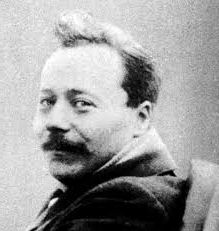Edward Teshmaker Busk
In the early years of powered flight inherent stability in an aircraft was a most important quality.
In 1913 this work was used in the R.E.1 (Reconnaissance Experimental), claimed as the first inherently stable aeroplane, and resulted in the development of the B.E.2c.
Busk was killed on 5 November 1914 while making an experimental flight in a B.E.2 which caught fire at Laffans Plain (now Farnborough Airfield), near Aldershot, burning him to death.
[2] Frederick Lanchester wrote in 1916:[1] Mr. Busk combined with exceptional ability as an experimenter a very thorough knowledge of his work; he was largely responsible for the design and construction of many instruments and appliances which have proved of the greatest service in the development of the present-day [flying] machine.Busk's genius and his courage were recognised by the posthumous award of the Gold Medal of the Aeronautical Society of Great Britain, and amongst the many letters of condolence received by his mother was one from King George V. His youngest brother, Hans Acworth Busk (b.
1894), was reported missing on 6 January 1916, last seen flying a heavy bombing aeroplane against the Turks at Gallipoli.

